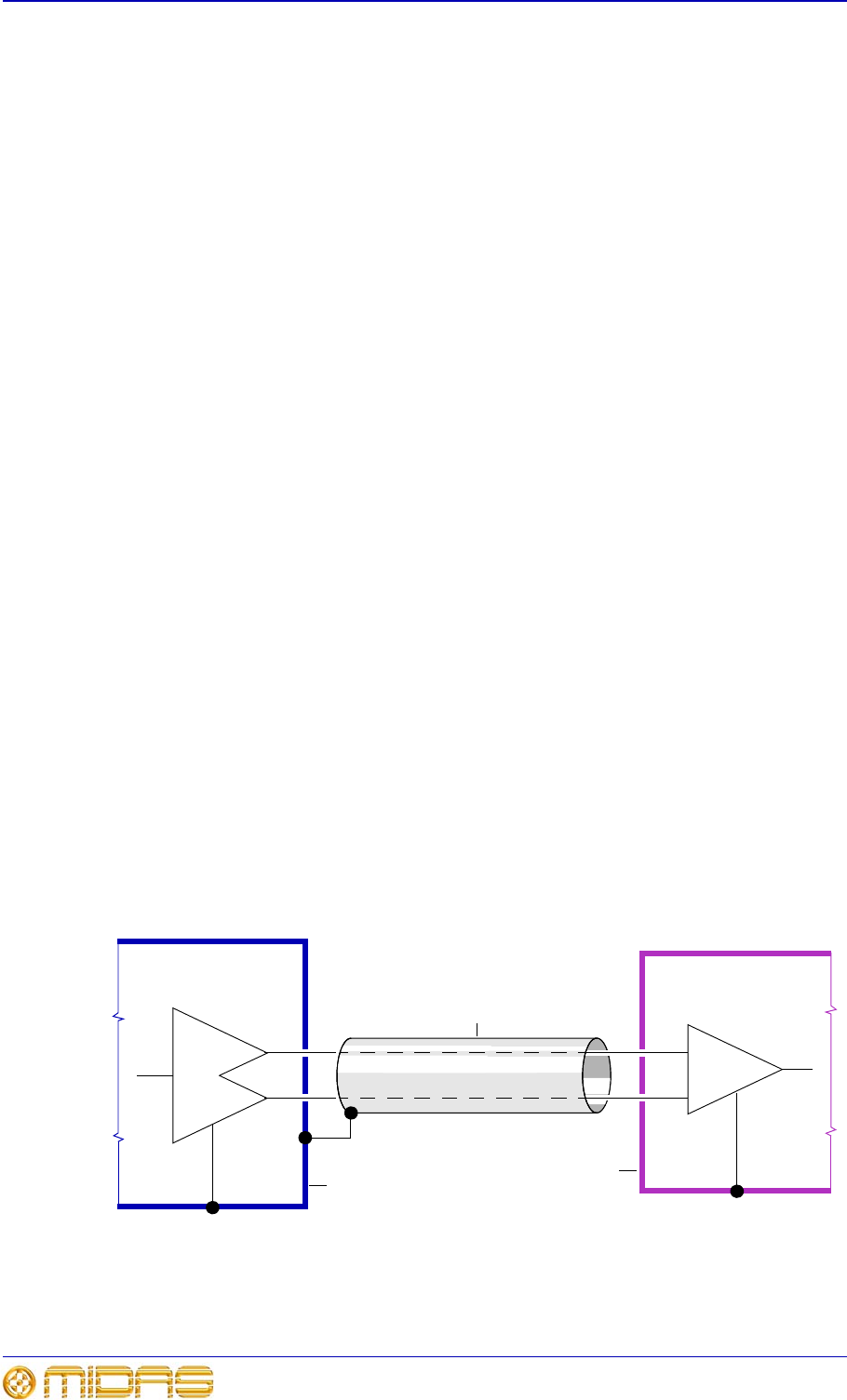
102 Appendix E: Best Grounding Practice
VeniceU
Operator Manual
Balanced transformers
Active electronic circuits achieve good results, but for ultimate noise rejection,
transformers are needed. Transformers colour the sound especially at low and high
frequencies due to core saturation and impedance rises. They are also expensive, so
they are typically only used as external problem solvers when all else fails.
Screen termination
Sometimes ground loop currents are so strong that even balanced systems can pick up
some noise. This is because the currents manage to find a way into a piece of
equipment’s internal unbalanced circuits. This is easily cured by breaking the screen
ground connection, so that it is only connected at one end of the cable. Opinions as to
which end to break differ within the audio industry but:
• Induced noises in electronically balanced systems are typically best rejected by input
stages, so breaking the ground there will generally give the best audio performance.
This also allows any common mode AC currents from the output driver to return via
the screen ground to their source rather than finding a longer path through the
power cables, which may give rise to noise or crosstalk elsewhere.
• Alternately, breaking the screen connection at the send end provides a much more
practical grounding scheme if cables are to be hot plugged. Then any cables that are
plugged first (that is, only) into an input will have a screen and thus will not be a
source of severe electromagnetic interference (which would be the case without the
screen connection).
• If a transformer is utilised within the balanced connection the best CMRR
performance will be obtained by breaking the screen ground at the transformer end
of the cable.
With long cable runs, sometimes the impedance of the screen conductor is high enough
that disconnecting one end allows some electromagnetic interference through the
screen onto the signal conductors. This is typically audible as stray local radio
transitions, typically at very low levels. If this is a problem, it can be cured by bridging
the break in the screen connection with a capacitor. This improves the screen at high
frequencies, but maintains the isolation that breaks ground loops at lower frequencies.
10nF to 50nF are good values to use and are available in ceramic packages that are
small enough to fit inside connector shells. Some experimentation may be necessary,
especially if multiple cables are bridging two units, because in this case the capacitors
are effectively connected in parallel and their combined value will grow (for example,
32 channels at 50nF will equate to 1,600nF). It is probably better to use 10nF for this
kind of multiple connection, so that the overall value only grows to 160nF.
Screen termination diagram showing screen broken at destination
Chassis
Chassis
+
-
+
-
Screen
Source
Destination


















